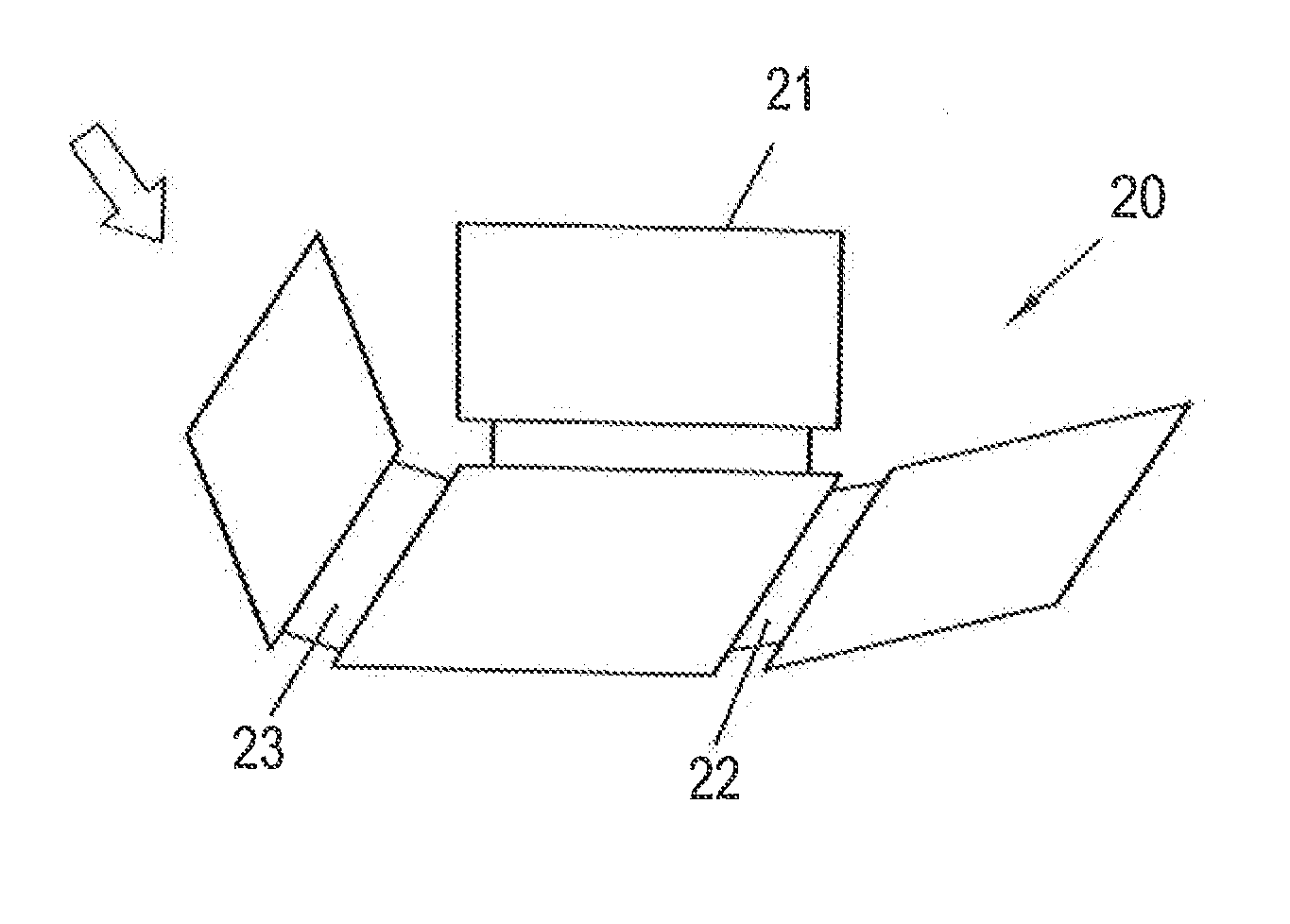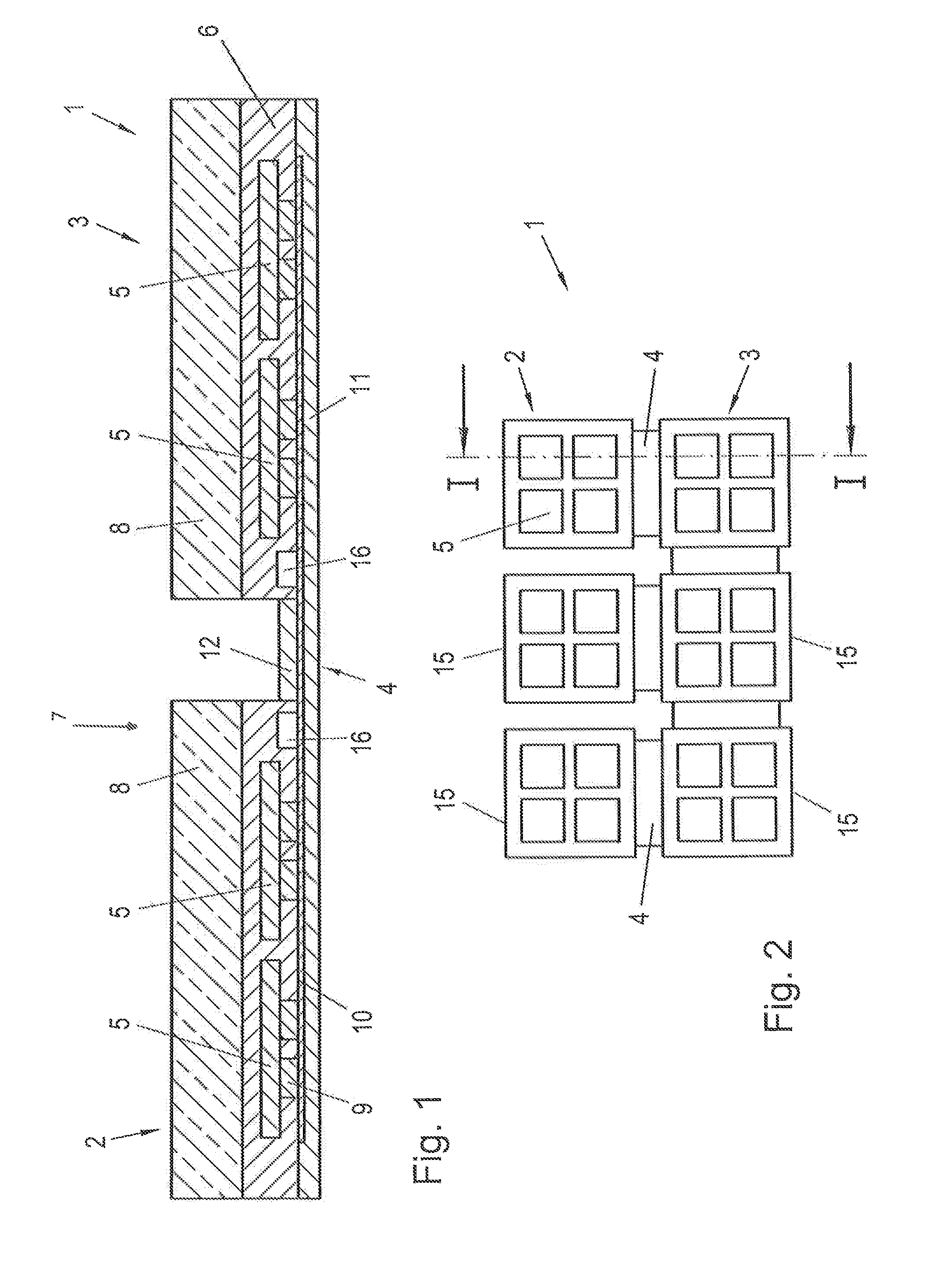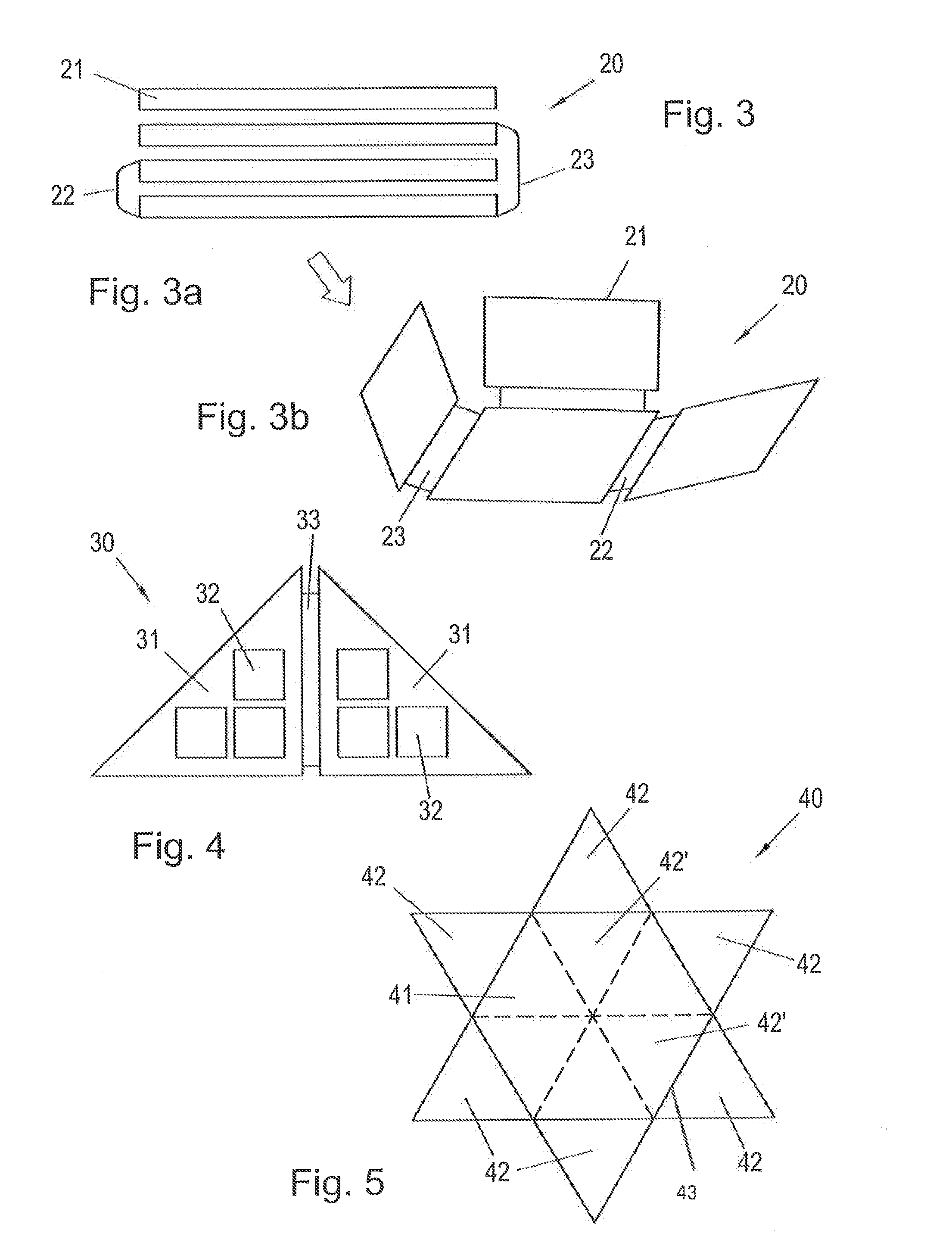Photovoltaic module and use thereof
a photovoltaic module and photovoltaic technology, applied in photovoltaics, photovoltaic energy generation, electrical equipment, etc., can solve the problems that large-area photovoltaic modules providing correspondingly high energy output will no longer be reasonably available in transportable form and/or readily usable, and achieve the effect of simple wiring
- Summary
- Abstract
- Description
- Claims
- Application Information
AI Technical Summary
Benefits of technology
Problems solved by technology
Method used
Image
Examples
Embodiment Construction
[0023]FIG. 1 depicts a section through a photovoltaic module 1, from which it is apparent that subregions 2 and 3 of the photovoltaic module are coupled or connected to each other via a flexible connecting region denoted by 4.
[0024]Each of the subregions 2 and 3 of the photovoltaic module 1 comprises a plurality of solar cells 5, which are embedded in a layer 6 of synthetic material consisting, for instance, of ethylene vinyl acetate. The solar cells 5 are, moreover, covered by a transparent cover layer 8 made, for instance, of glass in the direction towards an irradiation environment schematically indicated by 7.
[0025]For discharging the electrical energy generated in the solar cells 5, the latter are connected to an electrically conducting or conductive and structured layer or structure 10 via contacts schematically indicated by 9, said discharging of energy being effected via a connection housing (not illustrated) using the conducting layer or structure 10.
[0026]A cover film or l...
PUM
 Login to View More
Login to View More Abstract
Description
Claims
Application Information
 Login to View More
Login to View More - R&D
- Intellectual Property
- Life Sciences
- Materials
- Tech Scout
- Unparalleled Data Quality
- Higher Quality Content
- 60% Fewer Hallucinations
Browse by: Latest US Patents, China's latest patents, Technical Efficacy Thesaurus, Application Domain, Technology Topic, Popular Technical Reports.
© 2025 PatSnap. All rights reserved.Legal|Privacy policy|Modern Slavery Act Transparency Statement|Sitemap|About US| Contact US: help@patsnap.com



